The first activity today was getting on a boat right from the pier at the Ron Beach Hotel. They raised the American flag and we were on our way. The captain shut down the engines a ways out and we had a time of peaceful reflection on some passages . Andrew read some selections related to Jesus calming the sea and Jesus walking on the water. James lead us in singing “Master the Tempest is Raging”.
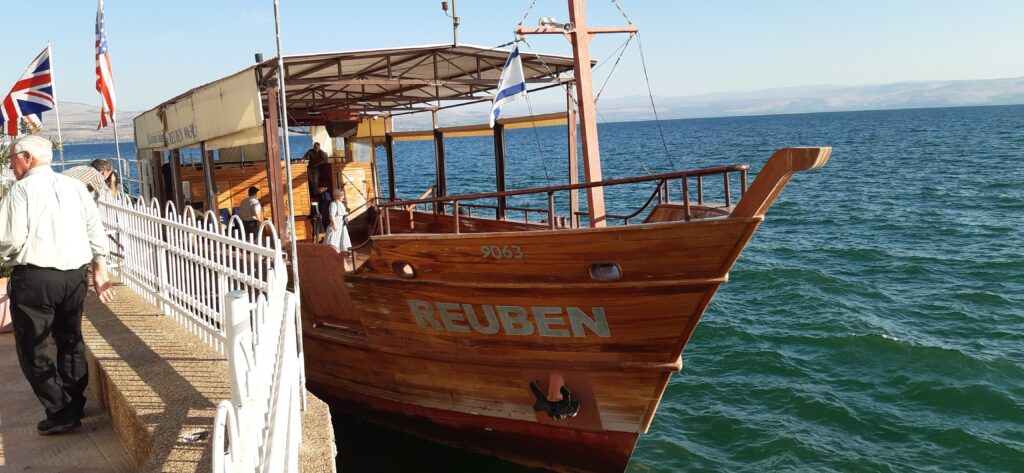
Our voyage ended at Kibbutz Ginosar, which is significant because its where the “Sea of Galilee Boat” was discovered. The boat was significant because it was the 1st New Testament era boat preserved in a fresh water lake.
We soon learned that what we call “Capernaum” is Kfar Nahoum here and means “the village of Nahum”. (Not nessesarily the prophet Nahum, but likely some other person of consequence.) It was also at an intersection of an important trade routes, “the way of the sea” (Matthew 4:15). This explains a few things: Why Jesus used this as a hub for his ministry and why Matthew would be sitting at the “receipt of customs” (collecting toll). Spreading the message of God’s Kingdom at this strategic spot meant it would have the potential of reaching far flung places along the trade routes. It was also a religiously attuned area that would be willing to react rigorously with the message.
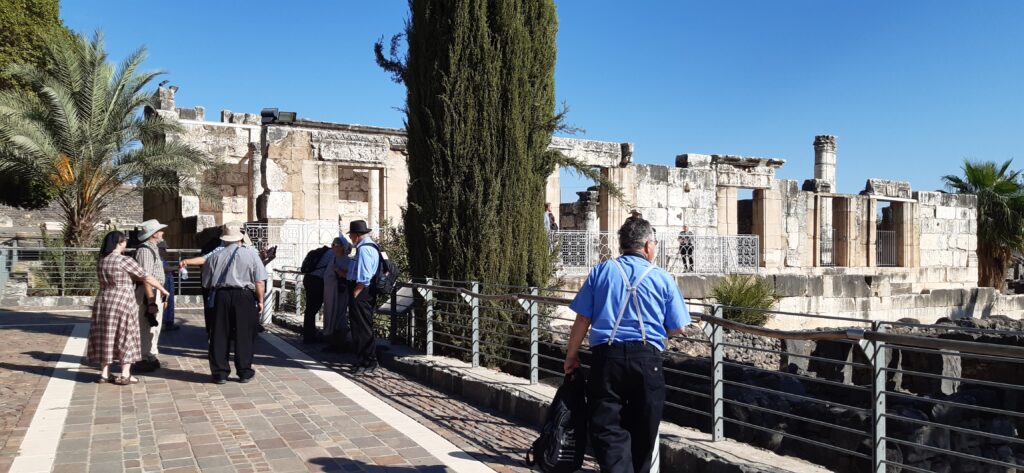
Mount Arbel is a high peak which overlooks the Galilee area. Was this where Jesus went to pray? Was this the place where Jesus gave the Great Commission? (overlooking the surrounding “world”?) After descended we tried some carob from a tree in a resting area. It tastes kind of like chocolate.
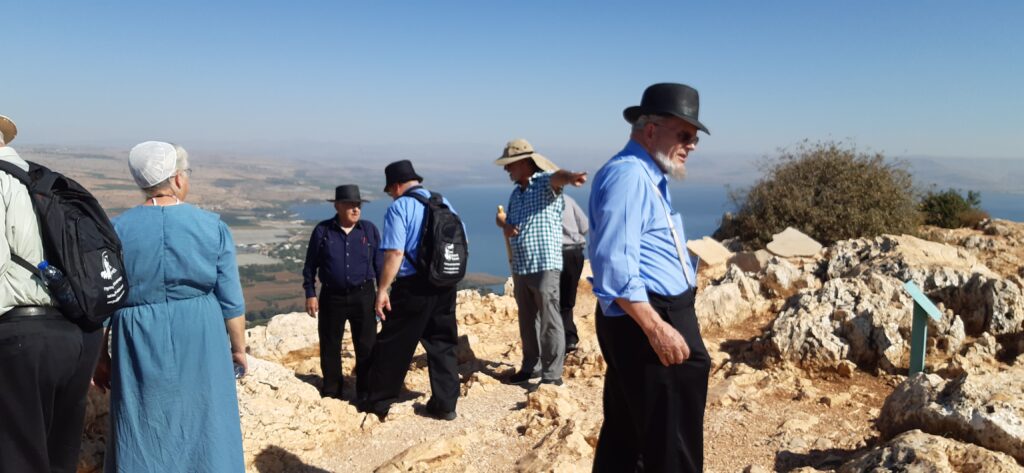
Those who wanted had the opportunity to get a “Peter’s fish” at Tanureen Galilee Restaurant for lunch.
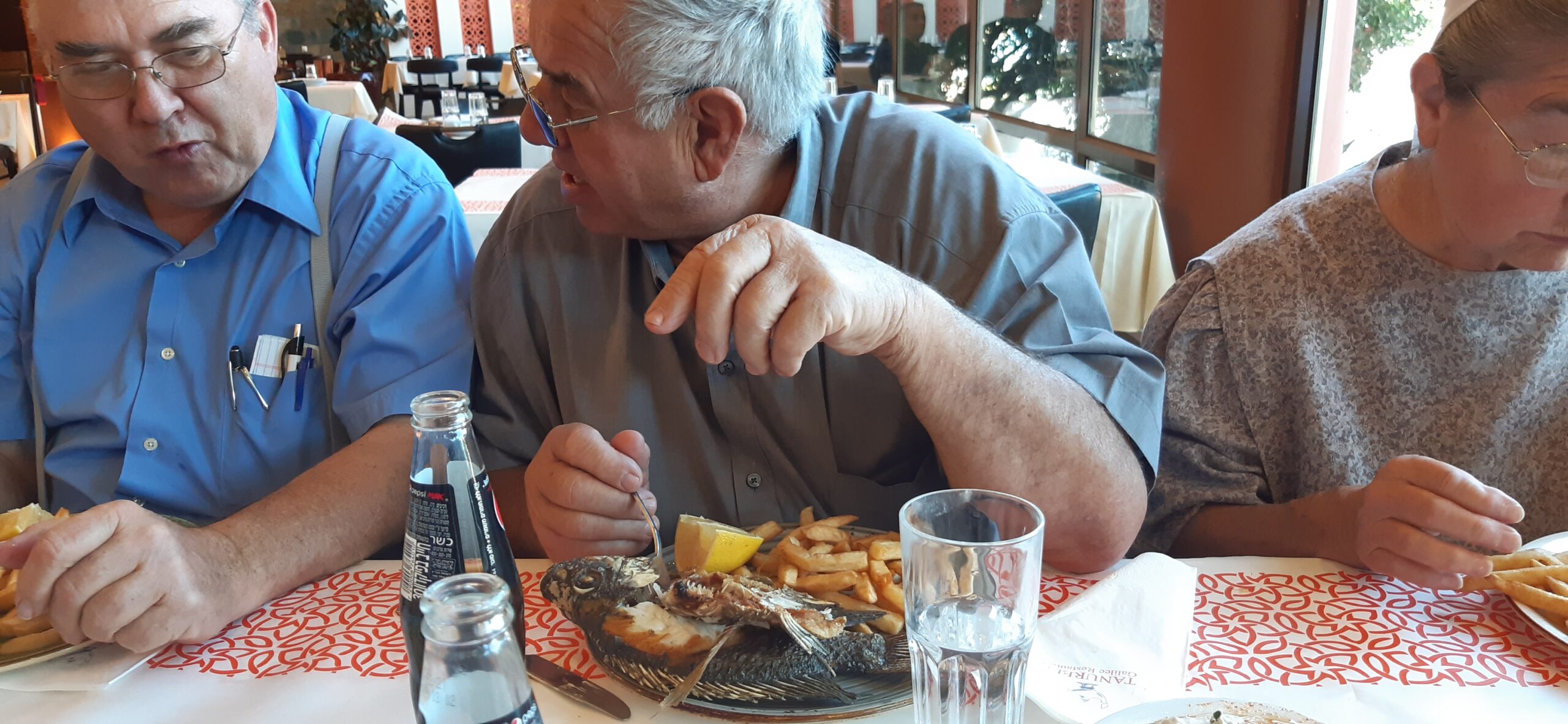
After lunch we headed to Magdala. This extremely interesting sight was discovered when the construction for a high end hotel was begun. The very first day of the excavation, in 2009, at only about 3 feet of depth the 1st century synagogue & town of Magdala was unexpectedly discovered. Roman coins from 9AD to 44AD were discovered in & around the synoguauge which means this synagogue was used during the life and death of Jesus.
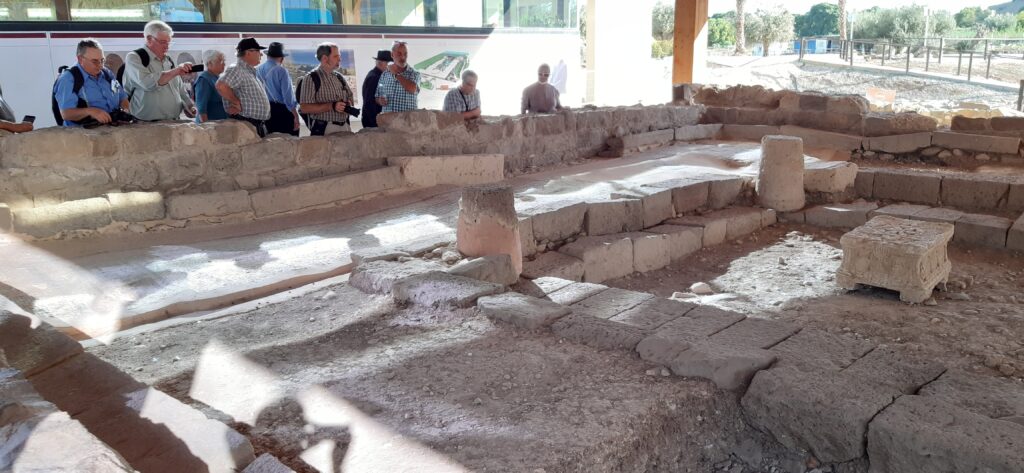
The synagogue has a mosaic floor, a “temple” reading table and by our count, seating for about 100 people with very spacious aisles. Since the New Testament says Jesus taught “in all the synagogues of Galilee” it is almost certain the Jesus once stood on this very floor.
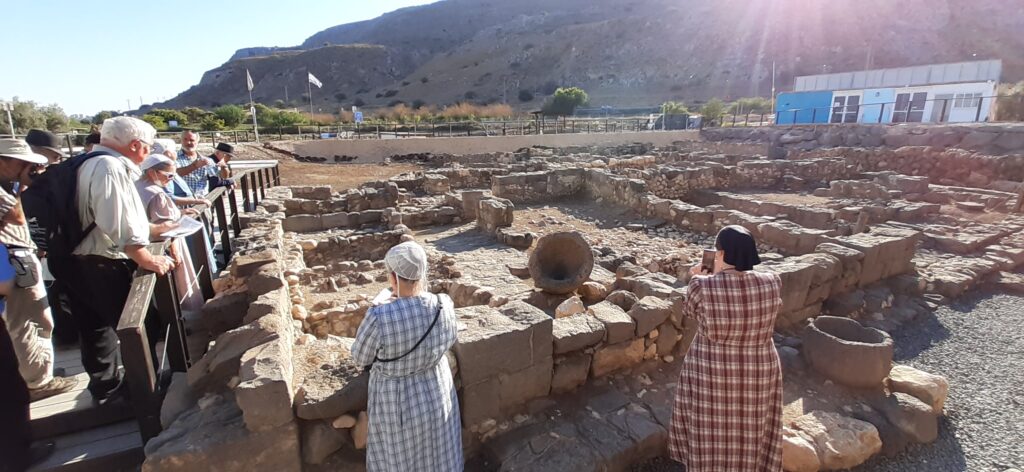
The ruins of the town of Magdala surrounded the synoguoge includs areas to store live fish, houses and the main road to the nearby Sea of Galilee.
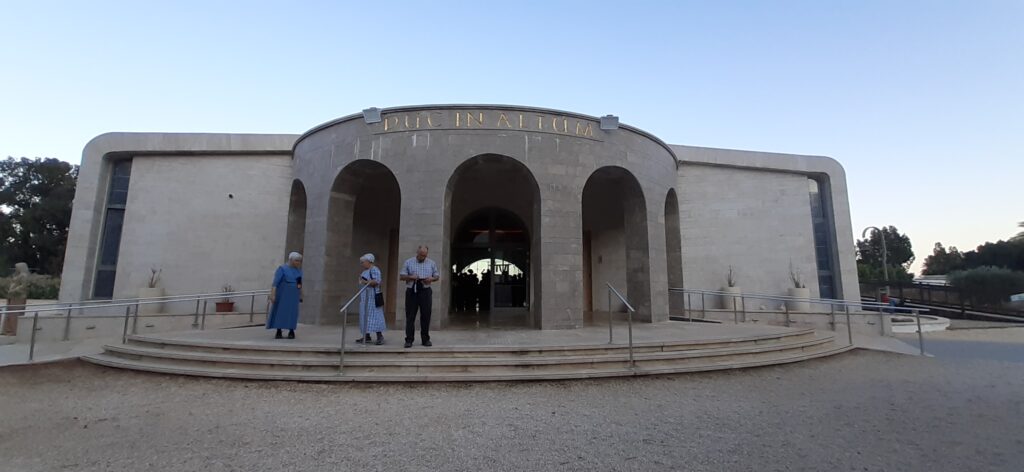
Mary Magdalene is closely associated with the town of Magdala and there is a statue of her and a Women’s Atrium in the Duc in Altum chapel. (“Put out into the Deep” chapel). The atrium celebrates the significant contribution of the women among the first community of believers and throughout history. An inscription encircling the ceiling noted: “The church gives thanks…for the mystery of woman, and for every woman, for her eternal dignity & for the wonders God has worked in & through her in the history of humanity.” Pillars throughout contain the names of women who followed Jesus, with one pillar with no name. To whom is this pillar dedicated? The women that were to come.
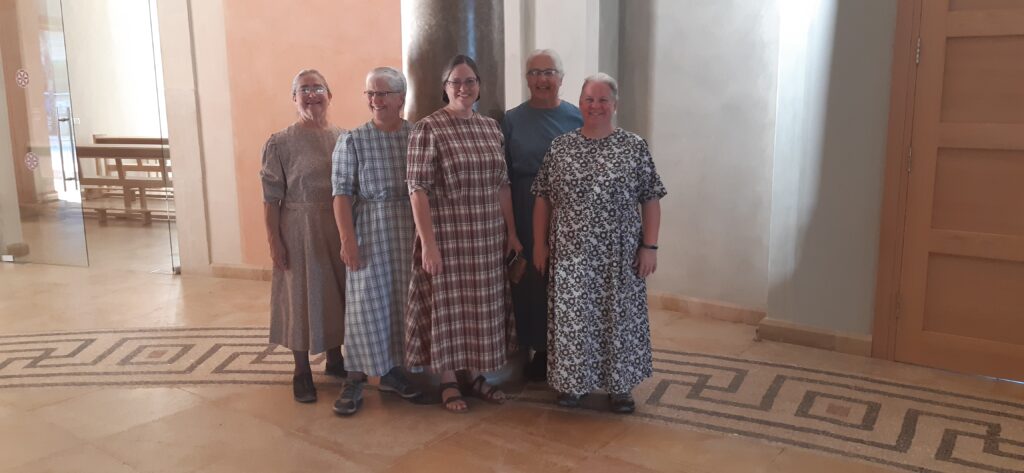
We were lead in a meaningful meditation about Jarius’ raised daughter & the woman healed by touching Jesus’ hem in the Encounter Chapel. Andrew talked about the meaning of tzitzit, or tassels or “fringes of the garments” that the woman likely touched: The 4 blue stripes stand for 4 letters of YHWH & the threads & knots in Jewish numerology stand for the 613 laws of Torah. At James’ suggestion we sang a few songs and spent some time praying for some pressing current needs in our world.